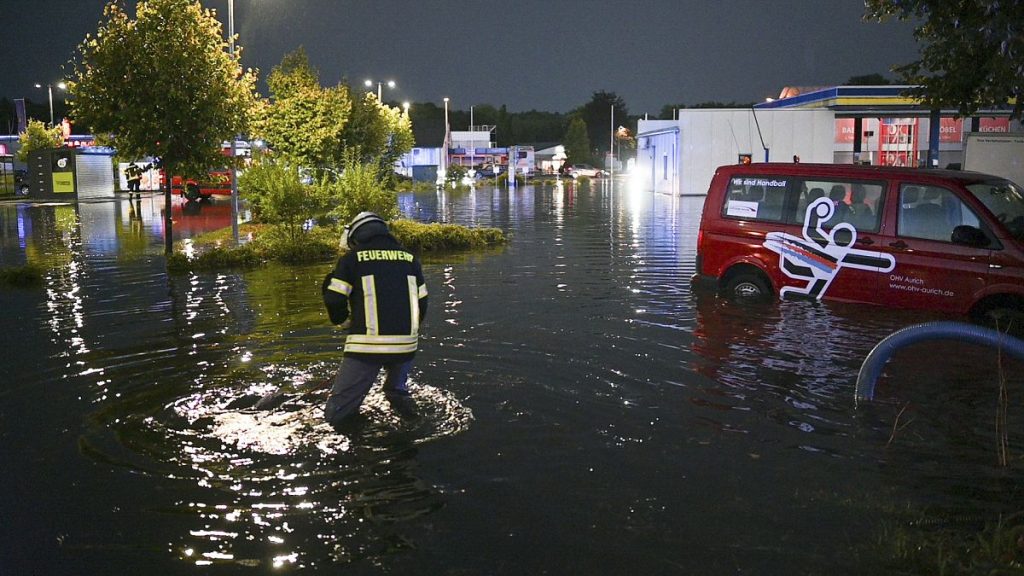Extreme weather conditions have led to devastation in Germany and Belgium. Severe thunderstorms, heavy rainfall, and flooding have caused chaos in both countries. Germany’s Rhineland-Palatinate region experienced temperatures as high as 36.5C before the storms hit. The North Rhine-Westphalia, Lower Saxony, Bavaria, and Baden-Württemberg regions were most affected by the storms, with severe weather warnings in place. Emergency services were deployed to address flooded streets, motorways, and cellars. In Baden-Württemberg, the Saalbach river overflowed, while in Bavaria, a train collided with a fallen tree on the tracks.
The extreme weather conditions in Belgium have also been significant, with the Royal Meteorological Institute issuing an amber warning in the Limburg and Liège Provinces. Other parts of the country remain under a code yellow warning. Brussels and the Antwerp province have experienced street closures due to flooding. In Wilrijk, 39mm of rain fell in just one hour. The KMI reported that August’s rainfall record had already been broken, with 100mm of rainfall recorded in Brussels this month, compared to the average of 86.5mm. The impact of the storms in Belgium has been substantial, mirroring the devastation seen in Germany.
The severe weather conditions in both countries have led to widespread damage and disruption. The intense heat that preceded the storms in Germany contributed to the severity of the weather events. The storms, which were fueled by soaring temperatures, have caused flooding, hail, and fallen trees in various regions. Emergency services have been working to address the aftermath of the storms, with reports of flooded streets, motorways, and cellars. While there have been no serious injuries reported in Germany, the impact of the storms on infrastructure and transportation has been significant.
In Belgium, the extreme weather has also taken a toll on the affected regions. The amber warning issued by the Royal Meteorological Institute highlights the severity of the weather conditions in Limburg and Liège Provinces. Street closures and flooding in Brussels and Antwerp have disrupted normal activities in these areas. The record-breaking rainfall in August has added to the challenges faced by residents and emergency services. The impact of the storms in Belgium, like in Germany, has been substantial, requiring a coordinated response to address the damage caused by the severe weather events.
As the storms continue to move towards other regions in Germany and Belgium, the need for preparedness and response measures remains critical. The severe weather warnings issued in North Rhine-Westphalia and other affected regions underscore the ongoing threat posed by the extreme weather conditions. While emergency services have been deployed to address the immediate aftermath of the storms, the long-term impact on infrastructure and communities is yet to be fully assessed. The resilience of the affected regions will be tested as they work to recover from the devastation caused by the severe thunderstorms and heavy rainfall.
The collaboration between authorities, emergency services, and residents will be essential in rebuilding and recovering from the damage caused by the extreme weather events in Germany and Belgium. The resilience of communities in the face of such challenges will be key in navigating the aftermath of the storms. As the focus shifts from immediate response to long-term recovery, the lessons learned from the recent severe weather events will be crucial in preparing for future extreme weather occurrences. With climate change likely to increase the frequency and intensity of such events, proactive measures and effective coordination will be essential in mitigating the impact of extreme weather on communities in Germany, Belgium, and beyond.


